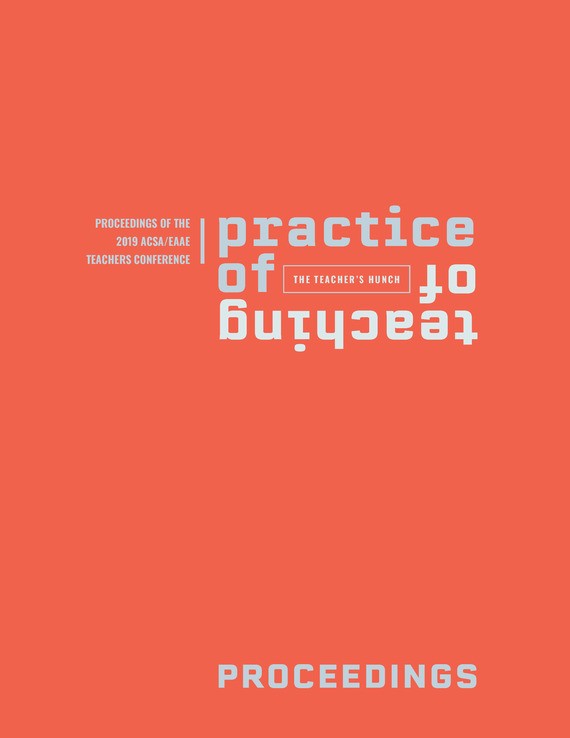Author(s): Andrew Colopy
Architectural education is often held up as an exemplar of project-based learning. Perhaps no discipline devotes as much curricular time to the development of a hypothetical project as is found in the design studio model prevalent in US architecture schools. Whether the emphasis is placed on more ‘classical’ design skills—be they typological, tectonic, or aesthetic—or on more ‘socio-political or eco-cultural aims,’ studios generally include the skills and values we deem instrumental to practice.1 The vast majority of such studios, therefore, emphasize the production of drawings, images and models of buildings, i.e., representation.2 This is not altogether surprising, as these are, by definition, the instruments of p ractice.3 But the emphasis on drawings and models also reflects the comfortable and now long-held disciplinary position that demarcates representation as the distinct privilege and fundamental role of the architect in the built environment.That position, however, continues to pose three fundamental and pedagogical challenges for the discipline. First, architectural education—to the degree that it attempts both to simulate and define practice—struggles to model the kind of feedback that occurs only during construction which can serve as an important check on the fidelity and efficacy of representation in its instrumental mode. Consequently, design research undertaken in this context may also tend to privilege instrumentation (representation) over effect (building), reliant on the conventions of construction or outside expertise for technical knowledge. This cycle further distances the process of building from our disciplinary domain, limiting our capacity to effect innovation in the built world.4 Second, and in quite similar fashion, the design studio struggles to provide the kind of social perspective and public reception, i.e., subjective political constraints, that are integral to the act of building. Instead, we approximate such constraints with a raft of disciplinary experts—faculty and visiting critics—whose priorities and interests seldom reflect the broad constituency of the built environment. The third challenge, and a quite different one, is that the distinction between representation and construction is collapsing as a result of technological change. In general terms, drawing is giving way to modeling, representation giving way to simulation. Drawings are increasingly vestigial outputs from higher-order organizations of information. Representation, yes, but a subordinate m ode that remains o pen to modification, increasingly intelligent in order to account for direct translation into material conditions, be they buildings or budgets.
https://doi.org/10.35483/ACSA.Teach.2019.25
Volume Editors
Richard Blythe & Johan De Walsche
ISBN
978-1-944214-23-4

 Study Architecture
Study Architecture  ProPEL
ProPEL 
